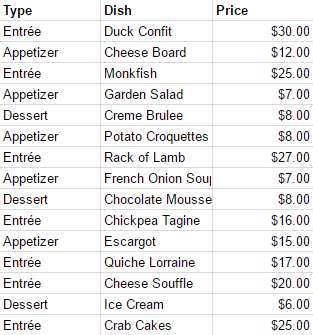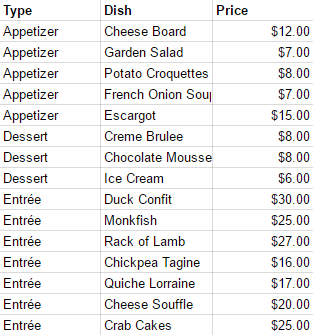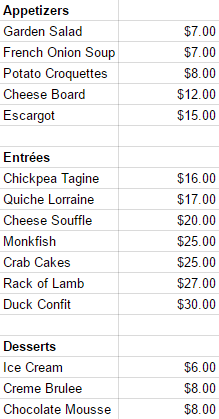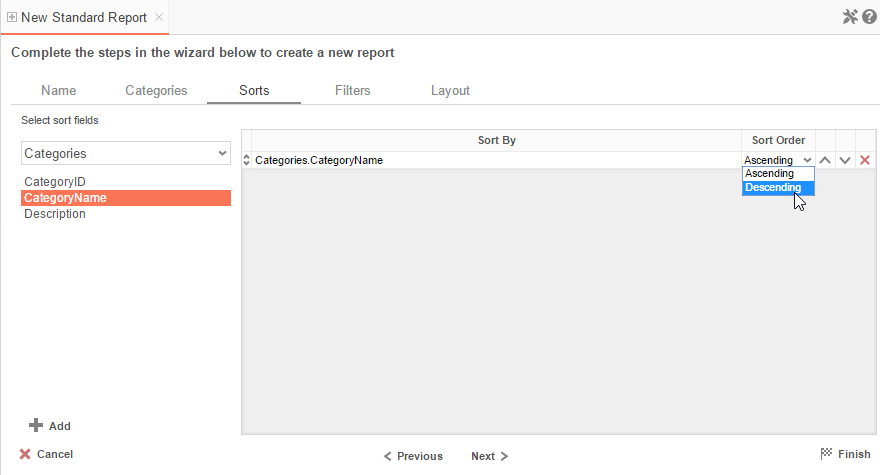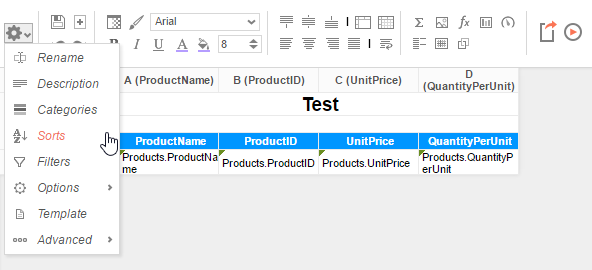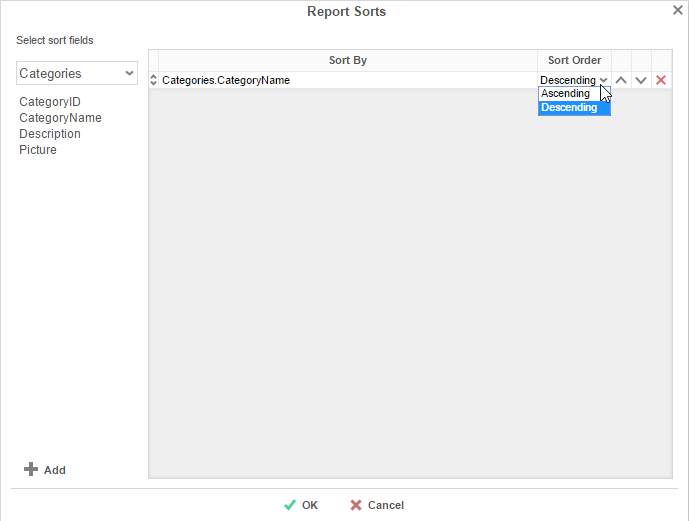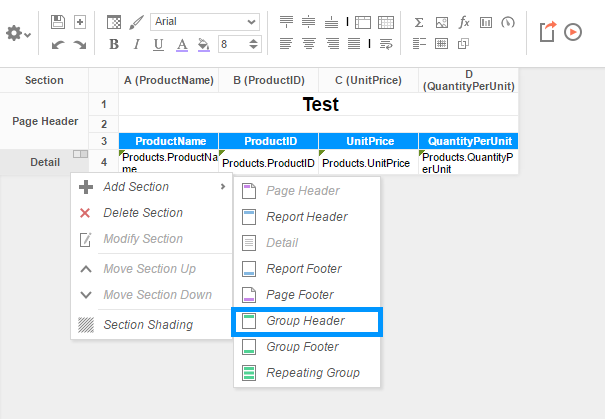Understanding Groups
Groups break up a data set into sections of related information, allowing for aggregation and/or the removal of repeated values from the tabular detail. We see grouping in lots of settings, but restaurant menus provide a useful example. We never see menus like this:
Or like this:
In the above example, the menu is stored by dish type, but there are repeated values in the "Type" column, which makes the menu difficult to read at a glance. For this reason, menus typically group on dish type:
Grouping works a bit differently in the application, but its function is the same. In either case, the first step in creating a group is sorting on the appropriate data field.
Creating Sorts
Users may either build sorts from the report Wizard or from the report Designer.
The Sorts Tab is the third tab in the report Wizard. To create a sort, drag and drop a data field into the sorts pane. Select "Ascending" or "Descending" from the Sort Order drop-down menu. Add as many sorts as you like, and change sort priority by using the up () and down () arrows.
Once in the report Designer, users may adjust their Sorts from the settings menu ().
The Designer Sorts menu functions much the same as the Wizard Sorts menu does.
Once you've sorted on a field, you're ready to group on that field.
NOTE. Nested groups should reflect the sort order. The outermost group header should be the highest priority sort, and the footer order should be reversed. Find more information on this Understanding Sorting and Grouping.
Sorting By Formula
To sort and group by information that may not be contained within an individual data field, you can use Formulas. See What are formulas for additional help.
Pressing the button or the Formula Editor () button opens the Formula Editor window:
- Add a Data Field by dragging and dropping it into the 'Formula' box or double-clicking it. Or enter it manually using the following format: {DataCategory.DataField}.
- Add a Parameter by entering it manually using the following format: @ParameterName@.
- Add a function by dragging and dropping it into the 'Formula' box or double-clicking it. Or enter it manually.
For example, say I had a data field containing a full date and time, and I wanted to analyze my sales by each month of the year over a multi-year period.
I could use the formula Month({Orders.OrderDate}) to return only the Month component of each date. Then I could sort my sales by Month.
Adding Group Sections
In order to add the group sections, click anywhere in the sections tab in the report designer. From here, select Add Section and then add Group Header.
